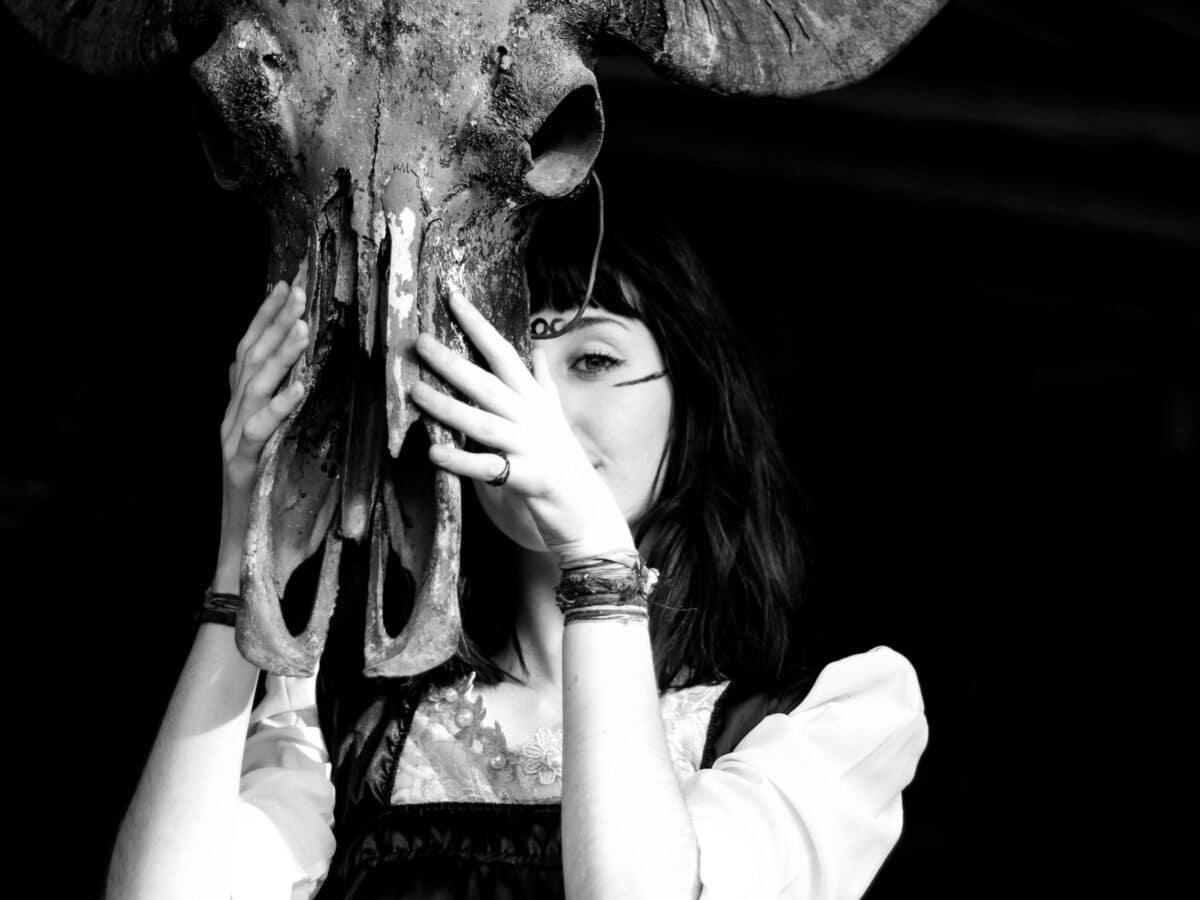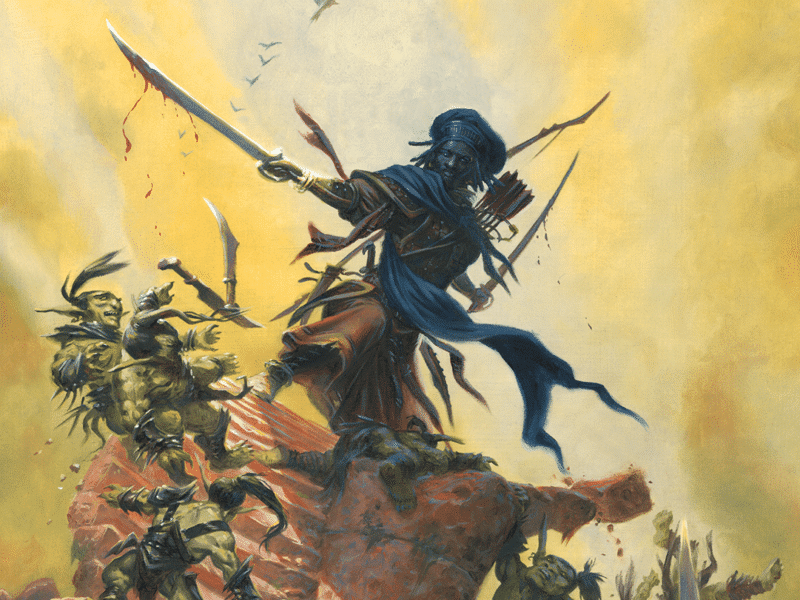The idea of fantasy adventurers being accompanied by faithful animals who aid them on their adventures is an old one, and the concept is well integrated into the rules and the basic setting of Dungeons & Dragons.
Look no farther than to R.A Salvatore’s great and hugely popular novels: in many of his books, the protagonist is a character called Drizzt Do’Urden, who – alongside a certain Aragorn, of course – has done a lot to make the ranger a persistently popular class, and he’s helped on his quests by a black panther known as Guenhwyvar. There are a thousand additional examples of variations on the same thing: one or more skilful adventurers who embark upon long journeys and overcome incredible challenges with the assistance of a loyal creature – either a formidable fighter in its own right, such as a wolf or a bear, or a mount like a horse or a large cat. Likewise, the main antagonists in fantasy stories often have a creature by their side as their pets, but also sometimes as advisors or protectors. There are quite a few sinister villains out there in general stories who have pet snakes or who keep spiders for fun, and the same is frequently true in D&D.
This is because animal companions offer an easy way to add fun and liveliness to adventuring parties – and they have many specific uses, too! In this article, I’ll take a closer look at the many reasons why having small critters and beast around make for lots of entertainment, more immersive sessions – and better storytelling. Come along and enter the menagerie!

They reinforce the traits of characters
A sly bard might keep a mischievous squirrel, a brave knight might ride an equally fearless stallion, a gentle druid attuned to the finer workings of nature could be accompanied by an exquisite bird, and a sagacious wizard can have a wise owl perched on their shoulder. All of these animals will contribute to highlighting the fundamental nature of their owners’ mindsets. Of course, these are extremely classical examples, and is usually more interesting and fun to tweak them a little. For example, what if the druid rides on a moose that also happens to be their old and unerring companion? The bard might have a ridiculously pretty golden retriever that sometimes steals the show with its out-of-tune howls, and the knight might have a cat so snobbish and uptight that it eats only freshly caught fish lightly fried in oil. Or what if the wizard was joined not by a clever fowl but a parrot that tries to mimic its owner’s spellcasting all the time (and who knows – this is D&D, so the bird might succeed one day!).
Also, it’s all the more intriguing if there’s a surprising contrast between a character and their companion! Here’s a simple opportunity for a DM to keep their players on their toes: introduce an NPC, and let them have an animal companion that doesn’t quite fit in. For example, if a charming and seemingly benevolent celestial cleric is found to keep a deadly snake in a vivarium in their chambers, what does this suggest about the cleric’s nature? Or is it a sign that the cleric can’t be trusted, or is the snake there simply because its owner has an interest in reptiles? The players won’t know, so they’ll be wary – which is fun!
On a related note, don’t forget to encourage your players to give their animals prominent traits – distinct looks, standout features, special sounds and hoots, and even personalities (unless you as the DM will handle this for the animal).
They can offer assistance in combat
As Dungeons & Dragons is a roleplaying in which combat is a central event – few adventures pass without at least one instance of weapons clashing and fireballs flying – an animal companion can be a welcome addition when a fight erupts. Obviously, when it comes to direct involvement, this applies only to animals that have statistics which allow them to deal damage in some way. What’s more, most animal companions stop being especially useful after the player characters gain a few levels, after which it’s better to let critters stay well away from heated battles.
However, animals can be useful in many other ways besides dealing damage with their claws, fangs, or horns. If the DM is willing, an animal that traditionally can be tamed and taught a number of tasks, such as a dog, might also serve as an extra watch when the party strikes camp or as a general but passive lookout for danger. Should the DM really be in on the idea, the creature might even be able to perform tricks such as retrieving important objects, giving up special sounds depending on what they see (“one bark for one creature, three barks for more” and so on), or follow commands in the middle of combat.
This is an appropriate moment to add a little pro-tip that might sound pointless or even contrary to the spirit of the game, but I would suggest that you at least give it some consideration. The tip is: don’t kill your players’ animal companions unless they have a reliable way to bring them back. The reason for this is that many players – myself included – tend to be extremely attached to their animal companions. Of course, this doesn’t apply to players who deliberately put their characters’ animals at risk for no reason whatsoever. But when it comes to regular creatures, just let them live. If this unbalances the game, the character has probably acquired an animal that’s too powerful, which is something that can be prevented by discussing new pets with the players before their characters get them,
They are excellent tools for the DM
Animal companions can also provide DMs with methods for guiding the characters in the right direction or keeping the adventure moving along. For example, when the entire party botch their perception rolls or just refuse to open the door that must be opened for the plot to move forward, a character’s animal companion can – for reasons known only to the DM – bark at the thing that must be noticed or paw at the critically important door. Not only is this less clunky compared to just telling a character that they hear or sense something that compels them to investigate a particular object or place, but it also makes the animal (and the character to whom it belongs) feel more important to the story.
In fact, this can be taken further: one can weave the plot of an entire adventure around a character’s animal companion. If it’s a regular creature, maybe there’s something from its past – a secret, a mysterious keeper, or a hidden place – that suddenly ends up crossing the path of the adventurers. Or maybe it returns with some mysterious object – a key, a necklace, or a shimmering orb – from the woods after being lost for a few days, and out of the blue the characters find themselves hunted or pulled into some nefarious intrigue.
These are but a few ways to let animal companions in D&D become more than passive and decorative creatures that only rarely make their presence known. The more you consider possibilities around pets and familiars, the more you’ll start to come up with neat ideas to make the proper members of the party. Everyone will enjoy it – especially the animals’ owners!







